On This Page: [hide]
The past few years of a rapidly changing socio-economic and technological landscape have had a tremendous influence on the adoption of “the cloud”. Following the outbreak of a global pandemic and subsequent stay-at-home regulations, companies were pushed to rapidly digitize their operations, resulting in the adoption of cloud-based services to support remote employees as well as the introduction of new cloud features.
So, where does this growing cloud computing trend put cloud hosting services? When it comes to cloud hosting providers, should we expect growth in demand? Since we are experts in the field of web hosting, we decided to delve into this subject and provide you with useful statistics. After all, numbers never lie!
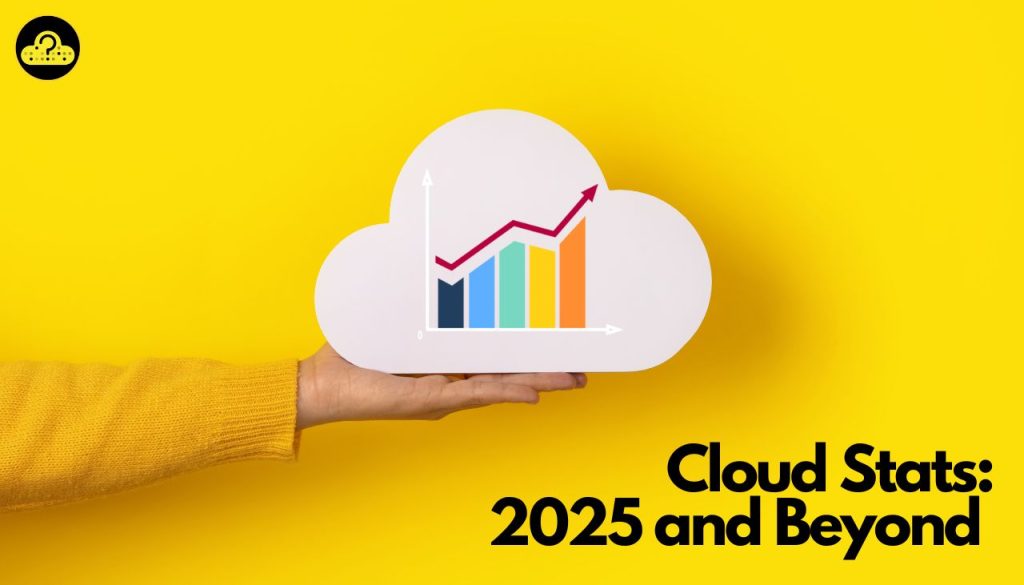
But first, let us explain what exactly cloud computing and cloud hosting are.
What Is Cloud Computing?
Cloud computing is a service that provides access to computer system resources, such as data storage and computing power, without the need for direct, active management from the user. When a cloud is large, its various functions can be spread out over multiple sites, each of which serves as a data center. This type of computing relies on shared resources in order to create coherence, and it often uses a “pay as you go” structure that can help reduce capital costs but may also result in unanticipated expenses for users.
What Is Cloud Hosting and How Does It Work?
Rather than relying on one data server, cloud hosting employs a cluster of servers to address load time and maximize uptime. This allows for increased security and reliability, as well as the capability to manage large amounts of traffic. Although cloud hosting is considered a better form of shared web hosting, it may be more expensive than other forms of hosting.
In other words, a cloud hosting solution is a network that runs on several servers. However, processes and data are delivered with the help of multiple servers rather than being hosted on a single one.
In terms of how it operates, it utilizes virtualization technology to create a single network for hosting a website. This is done by splitting a physical server into multiple virtual machines, or cloud servers, which are then interconnected to form a cluster server hosting system.
Why Do Businesses in Choose Cloud Hosting and Cloud Services?
Cloud hosting is an ideal solution for businesses who want to manage their websites’ computing resources and data storage without being solely dependent on physical servers. Furthermore, it provides various options for businesses, including:
- Infrastructure as a service (IaaS): Users obtain the virtualized hardware components required to install their own software environment when utilizing Infrastructure as a Service;
- Platform as a service (PaaS): Users are able to install and develop web applications more efficiently through a software environment provided to them on Platform-as-a-Service.
- Serverless computing: Although Serverless computing still requires servers to execute the code, it eliminates the need for developers to manage the underlying infrastructure, allowing them to build applications more quickly.
- Software as a service (SaaS): This service provides a method of delivering software applications over the internet, allowing users to access and use them remotely on any device with an internet browser. The vendor is responsible for keeping the hardware that runs the application up and running.
Cloud Computing User Statistics 2024 and Beyond
Needless to say, all these services are reliable, secure, scalable and cost-effective for modern-day businesses. Where are they headed in terms of growth in the upcoming years (up to 2029/2030)? What are the statistics saying?
All in all, the cloud services market has experienced significant growth in 2024 and is poised for continued expansion into 2025. Key statistics and projections include:
- Market Size and Growth: As per Statista, in 2024, the global cloud services market is valued at approximately $624.8 billion. This figure is expected to rise at a compound annual growth rate (CAGR) of 15.7%, reaching about $2,686.06 billion by 2034.
- Public Cloud Services: As per Gartner, end-user spending on public cloud services is projected to grow from $595.7 billion in 2024 to $723.4 billion in 2025, marking a 21.5% increase. Investments in Software-as-a-Service (SaaS) solutions are expected to approach $300 billion in 2025, up from just over $250 billion in 2024.
- Cloud Infrastructure Market Share: As per Canalys, as of the first quarter of 2024, Amazon Web Services (AWS) leads the cloud infrastructure services market with a 31% share, followed by Microsoft Azure at 20%, and Google Cloud at 10%.
- Artificial Intelligence Integration: As per Forbes Technology Council, the convergence of cloud computing and artificial intelligence (AI) is driving transformative advancements across industries. This synergy is expected to lead to significant innovations in personalized customer experiences and scientific discoveries by 2025.
- Capital Expenditures by Cloud Providers: As per IDC, major cloud providers are anticipated to increase their capital expenditures significantly, with forecasts indicating a rise from $218 billion in 2024 to $251 billion in 2025. This investment surge is primarily aimed at enhancing AI capabilities and expanding data center infrastructures.
Infrastructure as a Service Stats
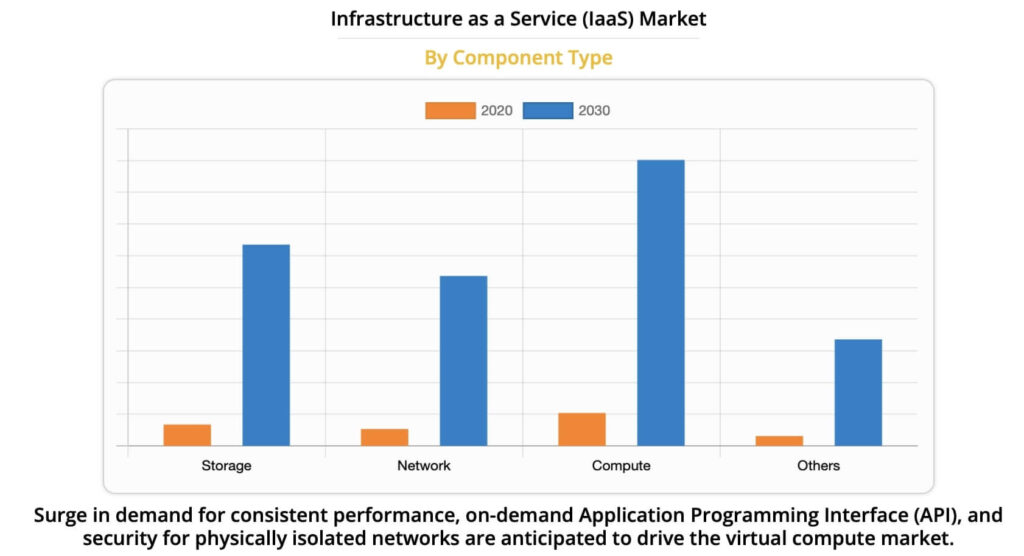
According to Allied Market Research, the global Infrastructure as a Service (IaaS) market was estimated to be worth $51.3 billion in 2020, and is expected to grow to $481.8 billion by 2030, registering a CAGR [Compound annual growth rate] of 25.3% from 2021 to 2030.
As we mentioned in the beginning, the COVID-19 pandemic had a considerable impact on cloud technologies, including the Infrastructure as a Service (IaaS) market, leading to a significant growth period. This growth is a direct result of restrictive containment measures such as social distancing, remote working, and the closure of commercial activities. These operational challenges for businesses drove the adoption of cloud services, contributing to the growth of the IaaS market.
Platform as a Service Stats
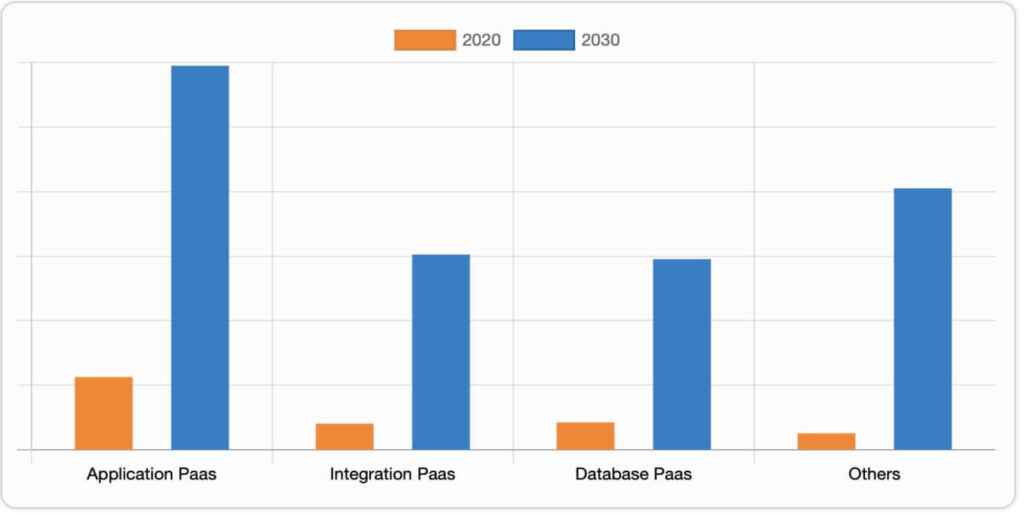
In 2021, the global Platform as a Service market size was estimated at USD 60.12 billion. It is expected that the market will grow at a compound annual growth rate (CAGR) of 19.3% from 2022 to 2028. PaaS is a cloud service that enables developers to create software in a virtual environment. Enterprises are increasingly turning to cloud services to reduce their costs and speed up the time to market (TTM) of their applications, which is one of the major drivers of the market.
Furthermore, the growing number of enterprises, along with the rising global adoption of cloud services, are also contributing to the market’s expansion. On the other hand, data breaches are becoming more frequent, raising concerns about privacy and security that could hamper market growth.
It is noteworthy that in 2021, the global PaaS market was dominated by the application development segment, which accounted for more than 50% of the total market share. This was due to the rapid adoption of PaaS among enterprises, as it provides IT developers with the ability to develop new mobile and web applications, innovate business practices, and streamline operational workflows. Additionally, the market is further segmented into debugging processes, testing, and deployment tools.
Serverless Computing Stats
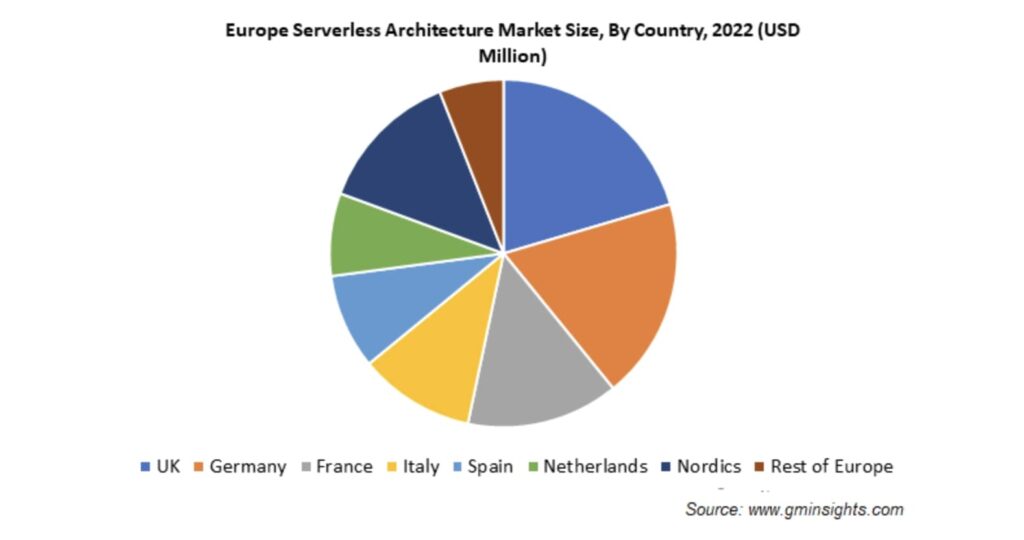
The demand for serverless computing is on the rise, with Mordor Intelligence predicting a growth of 22.6% between 2022 and 2026. This is largely due to businesses, particularly startups, adopting it as a way to support modern work environments and services without the need to purchase and maintain hardware for an in-house infrastructure. Serverless computing allows for staff to work from any location, making it a popular choice.
According to Market Watch, the global serverless computing market is expected to go through a significant growth during the forecast period of 2023 to 2028. In 2021, the market was already growing steadily, and with the increasing use of strategies by major players, the market is anticipated to grow further.
It is expected that the market in North America will witness considerable growth during the forecast period, owing to the high adoption of advanced technology and the presence of major players in the region. However, Europe is also expected to contribute significantly to the global serverless computing market, with a remarkable CAGR.
To summarize, the market size of serverless computing is projected to reach a value of multi million US Dollars by 2029, showing an unexpected CAGR increment.
Software as a Service Stats
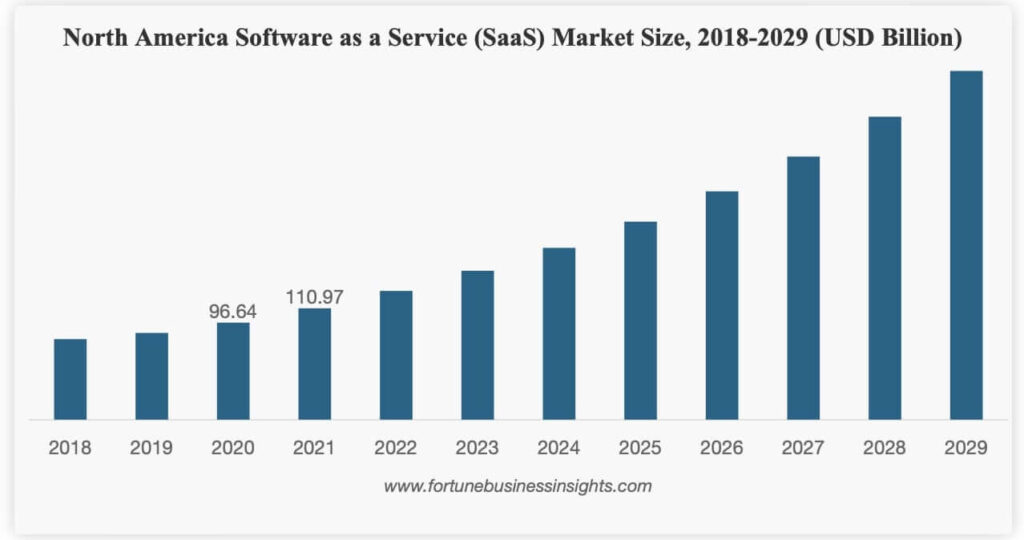
In the past decade, the SaaS market size has been steadily increasing, with the pandemic accelerating its growth even further. Companies are increasingly turning to cloud solutions due to their affordability, flexibility, and scalability, allowing them to move practically their entire operations to the cloud. As the demand for off-premise solutions continues to rise, the SaaS market is expanding into many different industries, and its revenue is expected to surge in the coming years. The following SaaS growth statistics demonstrate its promising future.
In 2021, the SaaS market was estimated to be worth $145.5 billion, with experts predicting an increase of nearly $26.5 billion for 2022 (Statista, 2021). Furthermore, the global cloud computing industry, which is the umbrella for SaaS, is exhibiting a CAGR of 16.3%, with a projected value of $947.3 billion by 2026 (Markets and Markets, 2021).
Cloud Hosting Services Statistics 2024 and Beyond: Conclusion
As is evident from the cloud computing statistics presented in the article above, each segment – software, infrastructure, and platform – accumulates billions of dollars in revenue annually. Employers take advantage of cloud services to increase their businesses without having to be concerned with physical storage and server upkeep. Cloud software helps their staff communicate and work from a distance, resulting in better job satisfaction and efficiency.
Cloud-based services, applications, and file storage enable everyday individuals to benefit from cloud computing. We have reached a stage where most of the world’s data is hosted on the cloud. Securing sensitive data and preventing cloud data breaches will be more critical than ever as we move forward. Cloud computing is an integral part of the current technology landscape and it is only going to expand further in the future.
References
- https://explodingtopics.com/blog/ – “34 Amazing Cloud Computing Stats (2023)“
- https://www.businessnewsdaily.com/ ” – “What is Cloud Hosting?“
- https://www.alliedmarketresearch.com/ – “Infrastructure As A Service (IaaS) Market Research, 2030“
- https://www.gminsights.com/ – “Serverless Architecture Market Size By Service“
- https://www.marketwatch.com/ – “Serverless Computing Market Outlook 2023 and Forecast to 2028 with Top Countries Data“
- https://financesonline.com/ – “85 Important SaaS Software Statistics 2023: Market Share & Data Analysis“
- https://www.fortunebusinessinsights.com/ – “Software as a Service (SaaS) Market Size, Share & COVID-19 Impact Analysis“
